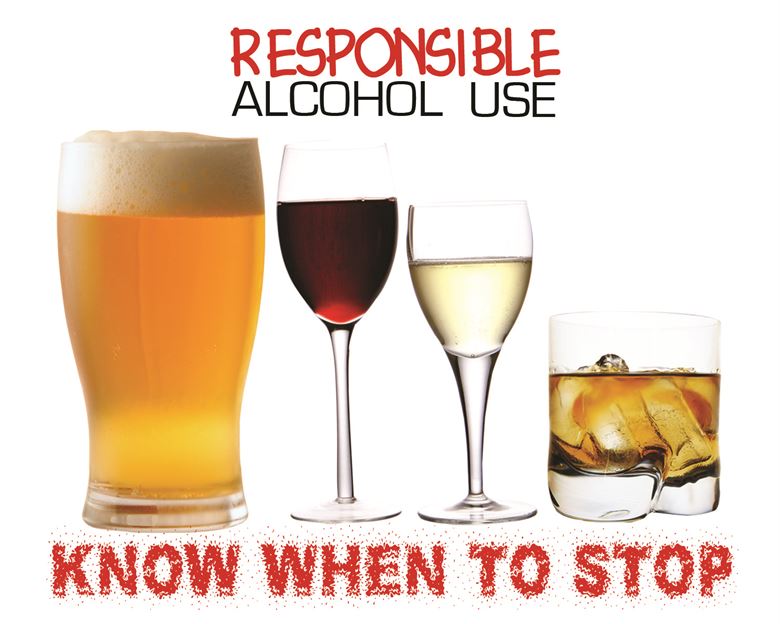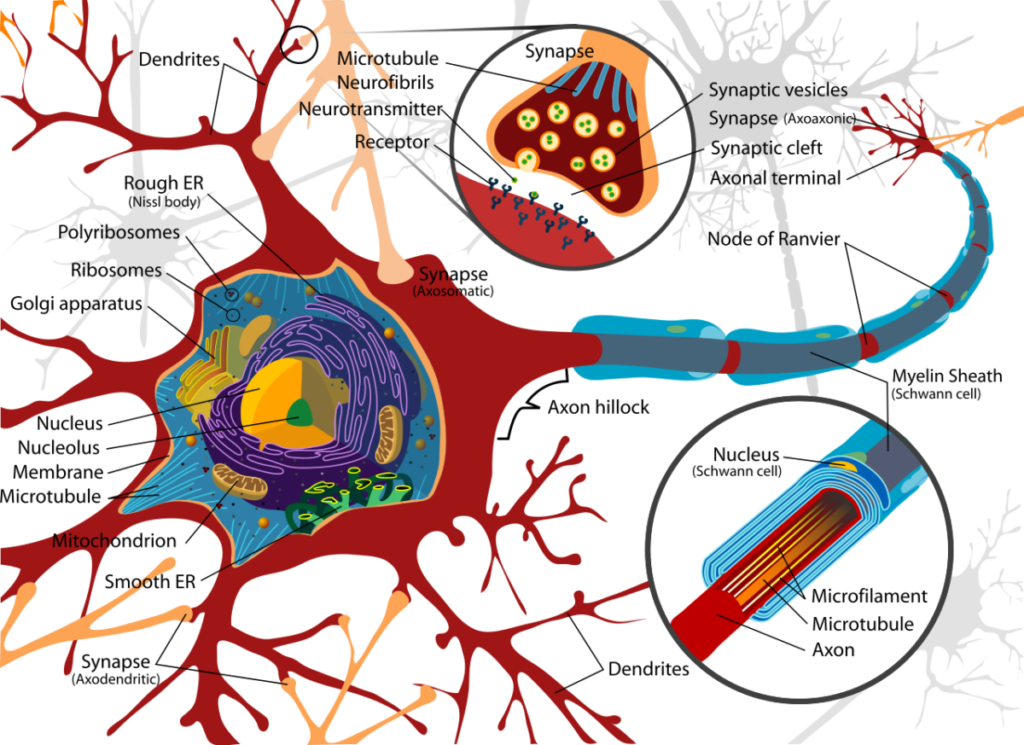



Researching the impact that alcohol can have on the maintenance of relationships is an important topic because alcoholism is a prevalent issue in our society that is affecting many people. This could possibly be prevented through further research on the effects that alcohol can have directly on relationships, as well as educating the public on these results.
In class, we particularly touched upon neurons, sensory receptors, and the way different parts of the brain function. I found this particularly interesting as learning about different aspects of brain functions has always fascinated me. Throughout high school and my first year of college, the topic I have always found most interesting in my psychology courses has been the technical ways the brain works. So, having this as one of the first topics we covered in our biology class was exciting to me. I knew I wanted to look into the brain somehow, but I wanted to see if I could also tie the brain into a topic that I’ve experienced or seen in my life. Upon reflection, I realized that I’ve seen – either first-hand or through experiences that my friends have dealt with – the effects of alcohol on romantic and platonic relationships. So, I decided that I wanted to look into the impact of alcohol on our neurons and brains in relation to our relationships.
Walcott and Ryabinin performed a research study in 2017 titled Alcohol’s Effects on Pair-Bond Maintenance in Male Prairie Voles. In order to find the effects of alcohol consumption on the maintenance a of pair-bond relationships in prairie voles, a set of tests were done in a lab setting. Walcott and Ryabinin investigated if discordant (only the male and not the female) or concordant (both the male and female) consumption of alcohol between the voles within pairs had an effect on the outcome of PP (partner preference). The study shows that if there was a discrepancy in the alcohol consumption between the male and female in the pair bond, the male exhibited a lessening in PP. However, if concordant drinking was present, males did not show this decrease in PP. One method in which these scientists reached this conclusion was by performing the Partner Preference Test.
The Partner Preference Test was done after the two-bottle choice test. This Two-Bottle Choice Test consisted of three experimental conditions: the first was both the male and female getting one bottle of water and one bottle containing 10% ethanol (concordant), the second consisted of the female having two bottles of water while the male still had access to one bottle of water and one bottle of 10% ethanol (discordant), and the third included both the male and the female only with water (control). After a 3-hour timespan the results were examined to show the effects that discordant and concordant alcohol consumption had on pair-bond maintenance. Videos of the voles were taken to precisely look at the amount of time that the male subject spent huddling with the stranger animal or the partner animal. Brain analysis conducted on euthanized voles from the experiment served as supplementary proof illustrating the effects of discordant drinking. The levels of FosB-immunoreactive produced in the whole brain was again different for both discordant and concordant males when compared with the control group. The difference between concordant and discordant males occurred in FosB-ir levels specifically in the LPAG. This suggests that the LPAG region of the brain is involved in the change in partner preference and maintenance of pair-bonds. Additionally, there was a decrease in overall oxytocin levels in the neurons in the PVN after long-term alcohol consumption for both males in the discordant and concordant groups, meaning it was a result of alcohol consumption alone. This led to cell death, as well as hypertrophy for the remaining cells, meaning that they compensated for the loss of the other cells by increasing oxytocin levels themselves. This ties back to what we learned in class about the functioning of neurons and shows us another aspect of how they are affected by substance abuse.
As shown in the PPT and immunohistochemistry tests, in all three groups, the males did spend more time huddling with their partner instead of the stranger animal, but in less time with the partner overall in the discordant group. This is very important because it confirms that discordant drinking resulted in less time spent huddling with their partner, hence lower pair-bond maintenance.
Understanding the outcomes concurred in this study is important because information found can translational to humans. Decreased PP in male prairie voles that discordantly consume alcohol results in the inhibition of these pair bonds. This reflects what can be observed in marriages where heavy discordant drinking is present. This study would help to explain the separating of one of my friend’s parents, as only her father exhibited heavy alcohol consumption. Perhaps if her dad’s alcohol consumption was lower, or her mother’s higher to match that of her dad there would not have been a separation. While evidence does not show that concordant heavy drinking in humans results in separation, divorce is an effect that discordant drinking can result in.


Here are two photos of my happily married parents. Although neither of them engage in heavy drinking, both of them will have a drink on special occasions such as my mom’s 50th birthday as pictured above. The other photo is just showing the happiness they experience sharing my dog as taking care of him always brings them laughter and joy. Being happy in a relationship can contribute heavily to good mental health, and this is why considering the effects of discordant heavy drinking on relationships is important!
Bibliography:
Walcott AT, Ryabinin AE. Alcohols effects on pair bond maintenance in male prairie voles. Alcohol. 2017;60:241–242. doi:10.1016/j.alcohol.2017.02.347
As someone who watched the effects of alcoholism on their parents relationship, I can say that this post is extremely insightful. Applying this study done on prairie-voles to humans could provide a reason that relationships might not last due to alcoholism, because there is something being changed in brain chemistry leading to a decrease in maintenance of those relationships. I also found the discussion about the effects of alcohol when both people in the relationship drink very interesting because it seems to suggest that separation wouldn’t occur in this scenario. I also believe that looking at an aspect that was interesting in the class and applying it her own personal experiences was a great choice to engage the audience. A very good piece overall.
I found this post very interesting, especially the experiment done on the prairie-voles. I always knew that separation and divorce was higher among marriages in which one partner has a substance abuse issue. However, it never occurred to me that the issue may be resolved if the other partner were to match the same levels of substance abuse. Now that I think about this, it makes complete sense—it’s the reason why people addicted to drugs often times have a partner who is also addicted to drugs. Both people have the same interests and priorities, which makes them attracted to one another. I would be interested to see what the scientific effects of drinking has on parent-child relationships and how these effects differ from partner-partner ones.
I completely agree that thinking critically about the effects of something as mainstream as alcohol is definitely important when it comes to interpersonal relationships. Seeing how the relationships of voles can translate to our lives is very thought provoking, and the fact that drinking could lead to less relationship maintenance is interesting. That and the fact that mutual drinking seems to lead to a lower rate of separation makes sense in our culture because, to many, drinking is a social activity even when addicted.
I found this topic very interesting because as we are getting older, more and more of our peers are turning to alcohol consumption. Learning about how alcohol consumption can affect relationships is interesting because it might allow me to determine whether a relationship will be healthy or not depending on the differences in drinking levels between each partner. I have thought about how many relationships can end or be unhappy due to the extreme substance consumption of one partner, however, I didn’t realize that it was due to their inability to match consumption. It makes sense that partners who consume close to the same amounts will likely be happier because they will likely both share the same priorities.